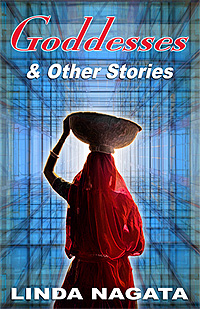Re-Thinking Cover Art: Using Stock Photos
December 1st, 2011Stock photos are the cover art solution for many indie publishers.
With royalty free stock photos, you pay a one-time fee for the right to use a proffered image–but you don’t have exclusive use. Anyone else can pay for the right to use the image too, so it’s possible you’ll see your cool cover idea repeated somewhere else. Personally, I think the odds of this are pretty long, so it’s not something I worry about.
Royalty-free stock is traditionally considered cheap—“just a few dollars†is what you’ll usually hear. I’m here to tell you it ain’t necessarily so. If you’re purchasing a standard image at a low-cost agency and you’re only doing an ebook, then yes, you could probably get what you need for $25 or less.
But if you need a photo in print resolution, the price jumps, and if you want to buy rights to a premium photo, the price jumps again, into the $100+ range. From the point-of-view of the photographer selling the rights, this doesn’t sound like much, but for struggling authors gambling that a particular cover design will work, it’s a real investment. And often, just one image won’t do. A good cover might need to combine multiple images, with the cost rising with each addition.
The most expensive image I’ve flirted with was over $400 at Getty Images. Thankfully, the design idea I was toying with didn’t work out.
The great thing about most stock sites is that you can download a low-resolution, watermarked image that can be used to try-out a design idea. The really bad thing about some stock sites is that you can’t make your purchases in cash. You have to buy sets of “credits†and of course you will always end up buying extra credits to cover the required amount . . . and eventually these credits will expire and the stock site will have just taken an extra skim of your money. It’s a very consumer-unfriendly system.
Did I mention that I loathe stock photo websites?
The pricing system is only part of it. The frustration of searching for just the right image is far worse.
 I’ve wasted untold hours looking for images to illustrate an idea I’ve got in my head. Often these searches end in complete failure. I know other people who’ve done well with stock photo images, but for all the time invested I’ve had only two real successes: the background image in the cover of my YA science fiction novel Skye Object 3270a was purchased from a stock site, as were the two images I combined for the cover of my story collection Goddesses & Other Stories.
I’ve wasted untold hours looking for images to illustrate an idea I’ve got in my head. Often these searches end in complete failure. I know other people who’ve done well with stock photo images, but for all the time invested I’ve had only two real successes: the background image in the cover of my YA science fiction novel Skye Object 3270a was purchased from a stock site, as were the two images I combined for the cover of my story collection Goddesses & Other Stories.
One huge problem with most image searches is that a search might result in 60,000 matches, but many of the same images will then be shown time after time, on page after page, making the effort to browse seem futile.
A second huge problem is that so many of the photos of people feature models so polished they look plastic, mugging for the camera in bizarrely tasteless ways. This might work for the lowest level of advertising, but it’s probably useless for your book cover.
So yes, stock photos can be used to make great covers, but if I have the opportunity of working with an artist, I’ll take that path every time.
Posted on: Thursday, December 1st, 2011 at 1:21 pm
Categories: Cover Art, Publishing.
Tags: cover art, royalty free stock photos







